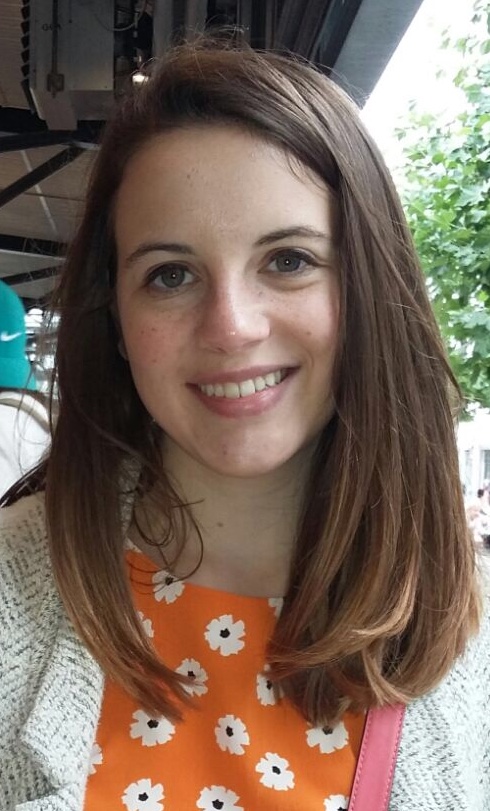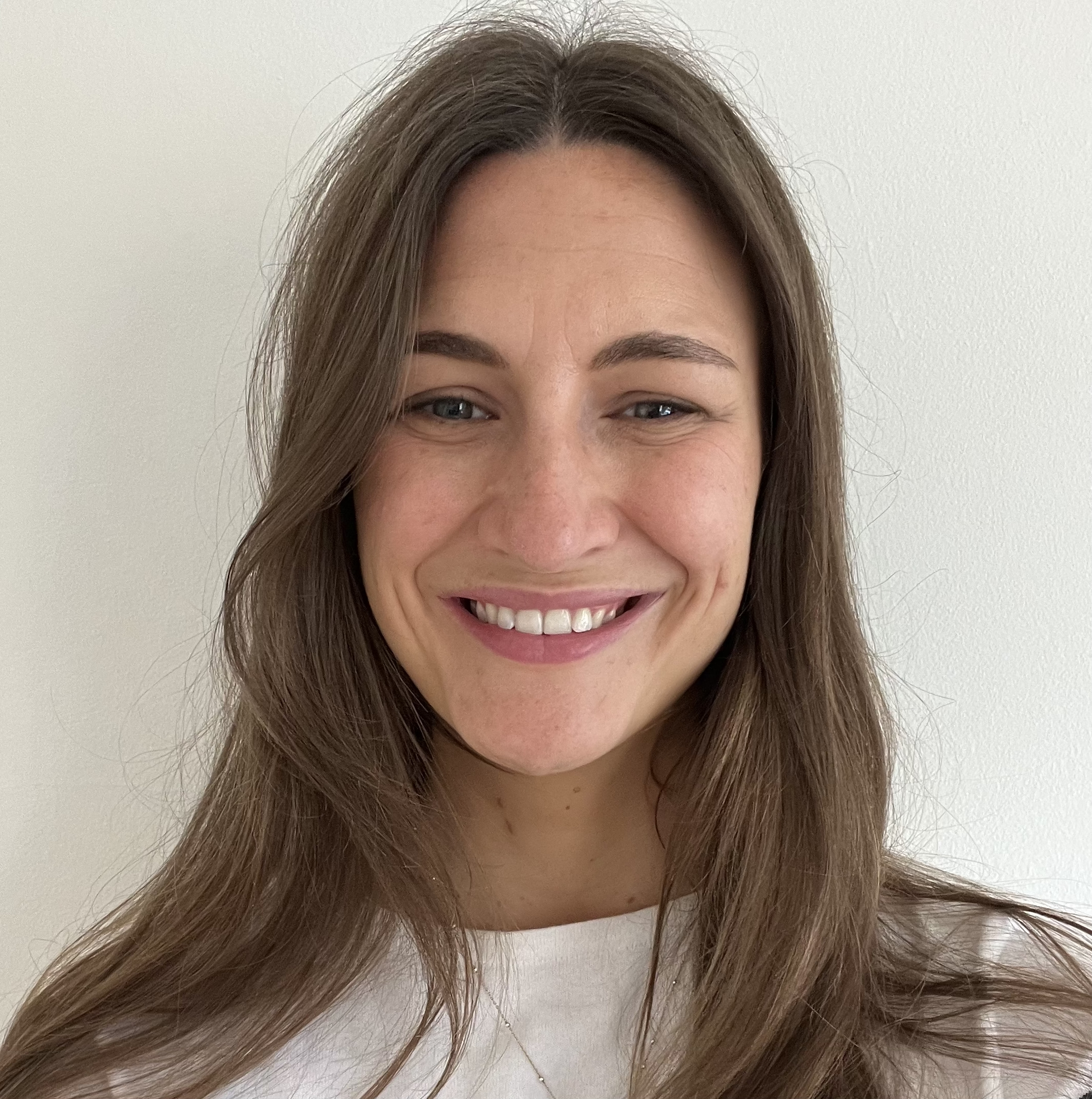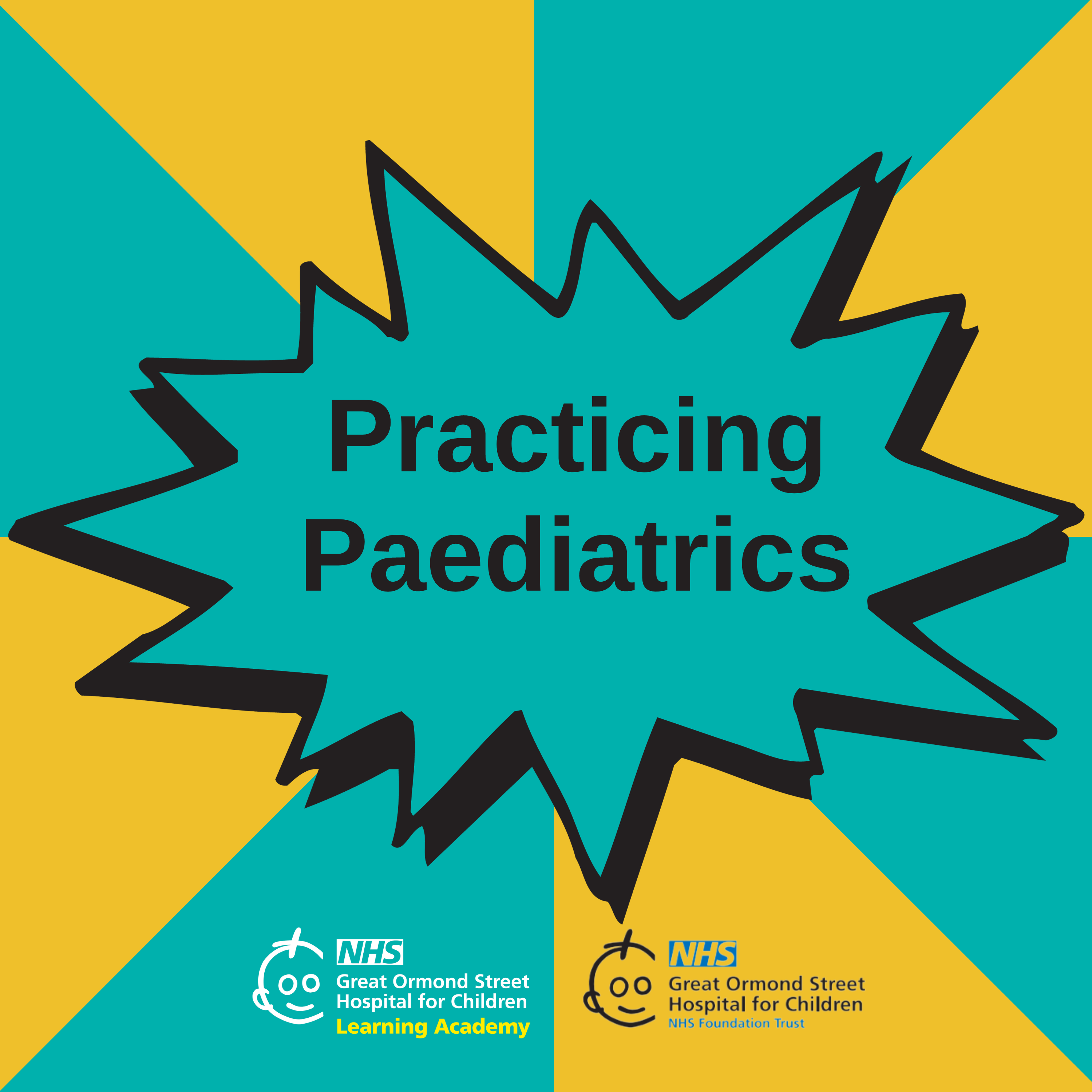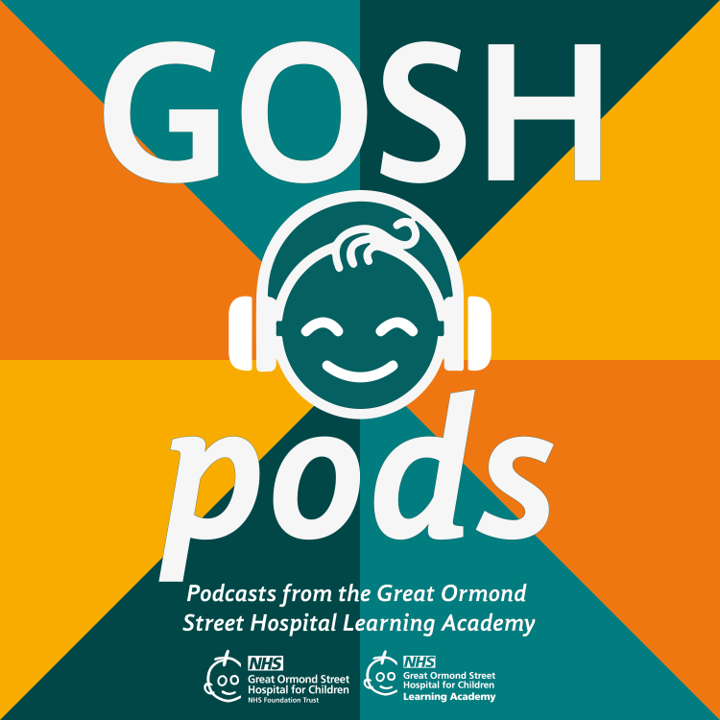This podcast is brought to you by the GOSH Learning Academy.
SA: Hello and welcome to Practicing Paediatrics. In this series, we'll be showcasing the specialist work of the clinical staff here at Great Ormond Street Hospital. There are over 60 different clinical specialties at GOSH, providing tertiary and quaternary level care for many rare conditions. So if you are hoping to learn a little bit more about a unique condition or intervention, or just find out more about the advances at GOSH, this may be the series for you.
I'm Dr. Sarah Ahmed, a paediatric registrar and the current digital learning education fellow here at Great Ormond Street.
In today's episode, we will be speaking with Dr. Reem Elfeky and clinical nurse specialist Helen Braggins about CGD. Reem is a paediatric immunology consultant at Great Ormond Street Hospital, where she specializes in bone marrow transplant and leads the CGD service. Helen is a clinical nurse specialist in the immunology team where she is also a specialist in CGD.
GOSH are hosting a hybrid one day course on the 25th of January 2024 all about CGD aimed at doctors and nurses with an interest in the condition. Go to courses.gosh.org to find out more.
Reem, Helen, thank you so much for coming on the show today.
RE/HB: Thank you.
SA: Before we delve into more detail, I wanted to start by asking, what would you like people to get out of this podcast?
RE: Yeah, I think this is an important question. So, it's actually to get them aware of the CGD activity day on the 25th of January, and this is a whole day program that they are going to know all about CGD. They are going to know how to suspect, what tests are needed, the available treatment options that are available, in GOSH which is one of the quaternary centres in the UK treating patients with CGD. They will gain insight into different services that are available for this unique cohort of patients in Great Ormond Street Hospital and at Royal Free Hospital.
SA: So let's start at the very beginning. CGD, what is it?
RE: CGD means chronic granulomatous disease. So this is the most common defect in the phagocytic system and phagocytes include neutrophils, eosinophils, monocytes, and macrophages. And the disease as, you can see it's called chronic granulomatous, so besides infection and increased rate of infections, these patients have also element of immune dysregulation and they develop granulomas.
SA: And is it a very common condition?
RE: So, the prevalence is 1 in 200,000, but in certain areas of the world where the consanguinity is high, especially that there are autosomal recessive forms of CGD, the prevalence can be much higher than this.
SA: And can we talk a little bit about what causes CGD?
RE: So the problem with chronic granulomatous disease is in at effect in one of the most important, molecules inside the cell, which is called NADPH oxidase. And this is important for the oxidative burst or respiratory burst. So NADPH oxidase leads to the production of superoxide free radicals, hydrogen peroxide, and this is responsible to allow the phagocytic cell to kill the pathogen. So if there is a defect in NADPH oxidase, then the phagocytic cells are not able to kill the pathogen, pathogen will remain, this will drive more inflammation. That's why in CGD you will see increase in our IL beta production, increase in TNF alpha and the patients are able to develop autoimmunity and immune dysregulation besides infections. This NADPH oxidase is formed of five subunits that come together in order to produce NADPH oxidase and induce this respiratory burst. And there is a sixth molecule that has been just added to be linked to chronic granulomatous disease, which is a chaperone for two of these molecules, and it's called EROS. And the most common, it can be X-linked chronic granulomatous disease, because of one of these routines being missing, which is called GB 91, or it can be autosomal recessive because of the other five molecules that I spoke about, gp 91,p22, p47, p67, p40 or EROS.
As I said, the most common is X linked. Following this is the p47. However, in other areas of the world where consanguinity is high, you might find the autosomal recessive forms more common than the X linked forms.
SA: And I think that leads us really nicely onto talking about how it presents. So can we talk a little bit about the signs and symptoms that children present with?
RE: In terms of clinical presentation, I would say that most common, age of onset is less than five years of age. However, there are patients that can present later, like in adolescence and adulthood. But the most common age is around 2 or 3 years of age.
And the common features are mainly infection, and they are mainly susceptible to infection by what we call catalase positive organisms. And these are the organisms that can override the immune system by escaping the hydrogen peroxide. And I said the problem with this is in the free radicals. So that's why these patients are most susceptible to catalase positive organisms. And these organisms are mainly staphylococcal infection, burkholderia, serratia and salmonella and tuberculosis. Of course, the pathogen itself relies more on where you are around the world.
Nocardia is another catalyst. It’s not necessarily that we have it a lot in the UK, but other areas like the Gulf area, they have Nocardia at a higher level. So the first thing is infection. And the site of infection is very important as well, because patients get lymph node infection, they can get liver infection, like liver abscess, they can give osteomyelitis, so bone infection, and they can get perianal abscess, which is another site of infection beside the skin abscesses. So it is important to look at the pathogen and to look at the site of infection.
And then the second presentation is colitis and, Crohn's like disease. And I would say that almost all patients with chronic granulomatous disease have some of colitis. However, what is published is that 50 percent will have it. But if we go and search more in the patient, even most of them will have some evidence of subclinical colitis.
The third thing is that they can get granuloma. This is part of the title of the disease so they can get granulomas in hollow organs. And this includes gastric outlet obstruction. If you have the pyloric area, if you have granuloma there, you can have granuloma in the urinary bladder. So this is another problem that they face.
And the fourth point that I think is important to highlight is that especially in patients with X linked CGD, the part of the X chromosome is affected is the XB21.1, and there might be a deletion there. And there are other four genes that are linked or contiguous to the area where the CGD protein is present. The GB 91 protein, and this include the OTC ornithine urea cycle defect, Duchene muscular dystrophy and retinitis pigmentosa. And the most important is the McLeod gene that is responsible for the blood group. So while it's quite rare to find the five genes missing or a deletion that is covering the five genes, but McLeod is one thing that we always search for in a patient with X linked CGD because then these patients would require a specific blood transfusion requirement that we need to meet.
SA: I see, so it's quite a constellation of symptoms and I suppose the aim is if you have a kid who's presenting with lots of different things, all of which could be CGD, is then to think about CGD?
RE: Yes, this is correct because there are, there is, differential diagnosis of course for CGD and this includes cystic fibrosis. So if you have a patient with respiratory symptoms you are thinking of infection but you are also thinking, especially with the age, you can think of cystic fibrosis. So it is in the differential diagnosis of this. They are also susceptible for fungal infection, particularly aspergillus. And then you see patients with allergic bronchopulmonary aspergillosis. So this is again in the differential diagnosis. While they are susceptible to TB, they have problem handling BCG vaccine, but this is in particular areas of the world. But the main differential diagnosis with CGD is also tuberculosis. And with the granulomas, you can say that the differential diagnosis is malignancy. And actually, we have a patient who had a cerebral tumour. She was investigated for cerebral tumour. The brain biopsy showed granuloma. Subsequently, she had the diagnosis of CGD. So you see how initially, she was thought to have a cancer and she went for a brain biopsy. And then subsequently, we know that it is just granulomas from CGD. And I think the other thing that is important is other forms of the immune problems, immune system defect, primary immune deficiency, that are similar to chronic granulomatous disease in terms of the type of bacterial pathogen and mainly step three loss of function because these people are more susceptible to staph infection as well as the CGD cohort.
SA: So if you have a child that you suspect has got CGD, what are the investigations that you would do in order to come to a diagnosis?
RE: So, we have, two diagnostic tests. One is called nitro blue tetrazolium test, or we just say NBT. And this is actually a test to look at the NADPH oxidase, looking at superoxide production. So if there is neutrophil that are stimulated from the patients, we stimulate them. And if these neutrophils got stimulated, the dye, this, nitro tetraolium will change by superoxide into formazan, which has a blue colour. So then, you know, that the cells are killing the bacteria. And this is a microscope test, so you see it on the slide. And then there is another test that we that I think is, is very helpful in chronic granulomatous disease is called the dihydrorhodamine test. And it is the gold standard. So it is a flow cytometry test that again, it is looking at NADPH oxidase activity based on the stimulation of the neutrophils by different actually stimuli, including E. coli etc. And this test, why it is a gold standard, because it can differentiate X linked CGD from autosomal recessive CGD because in X linked CGD, you have absence of NADPH oxidase, but in autosomal recessive, you can have a mosaic pattern where you still have some activity of NADPH oxidase. And it's also important to identify mothers that are carrier of X linked CGD by having two clones of cell. One is already, killing the bacteria and one of them that is already not functioning. And again it is through flow cytometry that you can identify this. So it's quite a gold standard diagnostic test.
SA: And so you have a child, they presented in a way that you think is CGD, you've confirmed the CGD. How do you then go about managing these children?
RE: So, first of all, there is, the supportive care. So these patients are at risk for bacterial and fungal infection, and we already know that the staph aureus, burkholderia, serratia are on the top of the list. So we need to give prophylaxis and the gold standard prophylaxis is Cotrimoxazole. We can start the Cotrimoxazole prophylaxis beyond the age of six weeks. Children less than six weeks, we start them on azithromycin until they are at the age to start septrin. So this is number one.
Number two, they are at risk for aspergillus infection. So mainly aspergillus fumigatus. So we start them on either, one of the azoles, itraconazole is our gold standard, but this is the supportive care.
When I see a patient who has chronic granulomatous disease, the second thing that I would do is tissue typing to look for a donor for him because the gold standard and the standard of care is to move these patients to stem cell transplant. And when you transplant these patients, when they don't have comorbidities, then you are going to achieve very good outcomes.
Gene therapy is, is offered for patients with chronic granulomatous disease, especially patients that have active infection and they cannot go for stem cell transplant because of the intensity of the chemotherapy or risk associated with transplant and gene therapy for these patients can be a very good bridge to control the infections, offer some control until you go for the gold standard. There are some trials of doing gene therapy as a curative option, but this is, under clinical trials.
The other part of treatment is that when the patients, if they have inflammatory bowel disease, if they have granulomas, you can give them steroid therapy. As I said, IL 1 beta is increased, TNF alpha is increased, so there is a possibility of blocking these pathways. And inpatients with significant infections, you need to try to dampen the infection because the neutrophils are not functioning well. In the United States they were giving them interferon gum, which we are not really very keen on doing in GOSH, but this is what is there in the States.
SA: I wanted to talk a little bit about the role of the MDT and especially the role of the clinical nurse specialists. Helen, I know that you're a clinical nurse specialist who specializes in CGD. Can you tell us a little bit about your role in supporting the children and in supporting their families?
HB: Yes, okay. Having a clinical nurse specialist is pivotal in ensuring the provision of safe and, appropriate clinical care. Families are often under the care of immunology, dermatology, gastroenterology, and either the bone marrow transplant team or the gene therapy team. Having a genetically inherited disorder also means that the family need access to genetic counselling and fertility services, which the CNS can facilitate.
The CNS is instrumental in providing support and information to educational and employment bodies, to children and adults affected by CGD. They will also signpost to supportive services such as social work, psychology and other charitable organisations. The overarching aim of the role is to keep the families at home, minimising risks to health and responding to the changes and providing health care needs, ensuring access to the most most appropriate care team.
SA: It sounds like you're a very important link person in kind of coordinating a lot of different levels of care amongst many, many different teams.
HB: Yeah, it's often like in a football match and you're the referee.
SA: I really like that analogy. And so there's, there's yourself, there's doctors and consultants like Reem. Are there other members of the MDT that get involved?
HB: There are organizations that provide information that's, you know based on research that's there for medical professionals, and we will refer to ECIDS, the European Society of Immunodeficiencies, and also the CGD Society that fund my posts provide information for those medical professionals and families.
SA: Fantastic. Let's bring it back a little bit to the medical side of things. Reem, I wanted to ask about the natural history of CGD. I'm assuming that if you get a bone marrow transplant, then your chances of cure are quite high.
RE: Yeah, so with the stem cell transplant and this is already data that is published there was led by my colleague Robert Keza at Great Ormond Street Hospital and he published the EBMC multi centre data including 712 patients and the survivor rates were actually around 85 percent. If you have a matched sibling donor you can have survivor rates of 90 percent and even above.
So, you can see how the survival rates are quite high and the quality of life is is good as well. And, in the same time, our colleagues, other colleagues, in Royal Free Hospital, who followed the patient with chronic granulomatous disease that did not go to transplant has also published the UK data about conservative management. And looking at this UK data while X linked disease seems to be worse than the autosomal recessive disease, as you would expect having some residual function with the autosomal recessive, the survival rates by the age of 40 was actually 50%. So you can see how not transplanting a patient will have poor outcome.
And patients have lots of complications, mainly organ damage because of the recurrence of infection. So despite that you are giving prophylaxis, you can still have breakthrough infections and the rate of breakthrough infections is like 0. 3 per year. So it's not something that we should, overlook it. It is quite relevant and important. So they have organ damage. They mainly the lung with the emphysema, with the bronchiectasis and recurrent repeated infections on top of bronchiectasis. They have a refractory inflammatory bowel disease. They get autoimmune manifestations like, whatever the type of autoimmune disease, including, not just, ITP, but also, neurological or autoimmune muscle diseases. And they are at risk for, because of the immune dysregulation, they are at risk for developing HLH. So there are lots of complications in these cohort patients. And if the transplant is offering good outcome, and definitely better quality of life, so we should be going for, that's why it is now the standard of care. So whenever you have a patient, you do tissue typing, and you look for a donor for him.
SA: And I know this is an area of medicine where there's a lot of research happening currently, and you already mentioned gene therapy. But I was wondering if there was any other kind of upcoming advances or new treatments on the horizon that we should be aware of.
RE: Yeah, so there is actually the future is bringing gene editing, so not just gene therapy. And the difference between, uh, gene therapy and gene editing is that in the gene therapy, you are putting the new gene inside the cell of the, the patient through a vector, which is the, now we are using lentiviral vector, so the patient will have the abnormal copy. And we'll also have the good copy and the good copy should work and, produce the NADPH oxidase. But the gene editing is different. So you are, getting rid of the abnormal copy and just making this abnormal copy a good copy. And there is an expansion in the use of CRISPR cas gene editing techniques, with the CAR T therapy programs. So this is the future for patients with primary immune deficiency, including CGD.
SA: Lots to look out for then in the future.
RE: Yes.
SA: I wanted to end with some quickfire questions, if that's okay. So firstly, what would you like a general paediatrician to know about CGD? What are the highlights that you want them to know?
HB: So if a patient presents with frequency, you'd look at the frequency and duration of infection, the siter of the infection, any unusual pathogens, and that really should raise a high level of suspicion for primary immune deficiencies, including chronic granulomatous disorder.
SA: Amazing. And are there any useful resources that you would recommend?
HB: Again, we would refer to the ECID guidelines and the CGD society information that's available on both of their websites.
SA: And finally, what are your three takeaway learning points?
RE: Yeah, I think, just bullet points. If a patient have liver abscess, think of CGD. If a patient have inflammatory bowel disease and is a child less than six years of age, think of CGD. And if there is, these unusual bacteria as Helen highlighted, mainly staph aureus, serratia and burkholderia think of CGD.
And I would like to add a fourth key learning point. A fourth point that is important is that family history. So if you have a family history of sibling death of recurrent infection, not necessarily saying clearly CGD, think of primary immune deficiency, including CGD. And once you suspect, please refer, even if you don't know the test, it doesn't matter. Just call us and we will be there for you.
SA: Wonderful. Reem and Helen, thank you very much for talking to us today.
RE/HB: Thank you.
SA: Thank you for listening to this episode of Practicing Paediatrics. We would love to get your feedback on the podcast and any ideas you may have for future episodes. You can find a link to the feedback page in the episode description or email us at
[email protected]. You'll also find a list of resources and further reading in the description.
If you want to find out more about the work of the GOSH Learning Academy, you can find us on social media on Twitter, Instagram, and LinkedIn. You can also visit our website at www.gosh.nhs.uk and search Learning Academy. You can visit the GOSH DEN via our website to see what courses we have on offer.
We have lots of exciting new podcasts coming soon, so make sure you're subscribed wherever you get your podcasts. We hope you enjoyed this episode and we'll see you next time. Goodbye.





